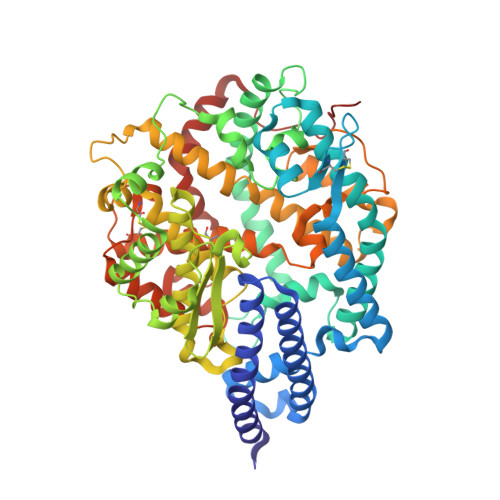Structural basis for mouse receptor recognition by SARS-CoV-2 omicron variant.
Zhang, W., Shi, K., Geng, Q., Ye, G., Aihara, H., Li, F.(2022) Proc Natl Acad Sci U S A 119: e2206509119-e2206509119
- PubMed: 36256797
- DOI: https://doi.org/10.1073/pnas.2206509119
- Primary Citation of Related Structures:
7UFK, 7UFL - PubMed Abstract:
The sudden emergence and rapid spread of the severe acute respiratory syndrome coronavirus 2 (SARS-CoV-2) omicron variant has raised questions about its animal reservoir. Here, we investigated receptor recognition of the omicron's receptor-binding domain (RBD), focusing on four of its mutations (Q493R, Q498R, N501Y, and Y505H) surrounding two mutational hotspots. These mutations have variable effects on the RBD's affinity for human angiotensin-converting enzyme 2 (ACE2), but they all enhance the RBD's affinity for mouse ACE2. We further determined the crystal structure of omicron RBD complexed with mouse ACE2. The structure showed that all four mutations are viral adaptations to mouse ACE2: three of them (Q493R, Q498R, and Y505H) are uniquely adapted to mouse ACE2, whereas the other one (N501Y) is adapted to both human ACE2 and mouse ACE2. These data reveal that the omicron RBD was well adapted to mouse ACE2 before omicron started to infect humans, providing insight into the potential evolutionary origin of the omicron variant.
Organizational Affiliation:
Department of Pharmacology, University of Minnesota Medical School, Minneapolis, MN 55455.























